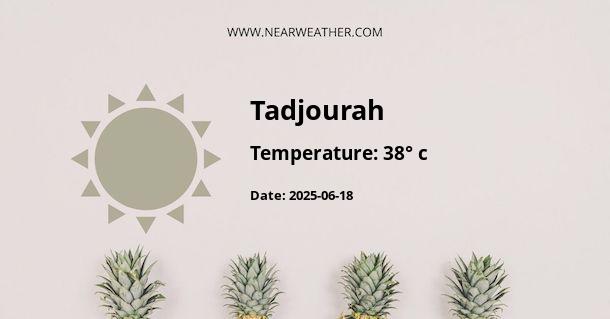Introduction to Tadjourah, Djibouti
Tadjourah Region, located in the small yet captivating country of Djibouti in the Horn of Africa, boasts a diverse and fascinating climate. Bordered by the Red Sea and Gulf of Aden, this region is known for its unique geographical features and contrasting weather patterns. This area, though relatively small in scale, offers an array of climatic conditions that significantly vary from coastal to inland areas.
General Climate of Tadjourah
The climate of Tadjourah is primarily desert, characterized by scorching temperatures and sparse rainfall. The annual average temperature is around 29.5 °C, and the yearly precipitation is approximately 163 mm. Despite being a desert region, Tadjourah is bestowed with the cooling marine influence of the Red Sea, which often brings much-needed relief from the excessive heat.
Seasonal Weather Overview
Winter Season (October to April)
The winter months in Tadjourah are generally warm and dry. Temperatures range between 20°C to 30°C, providing a more comfortable climate for visitors and residents. However, even during these cooler months, the sun can be quite intense.
Summer Season (May to September)
Summers are extremely hot and arid, with average high temperatures soaring to 40°C and beyond. The heat can be intensely scorching, particularly in the inland areas. However, the coastal regions, with their sea breezes, are comparatively cooler and bearable.
Despite being primarily a desert region, the coastal influence on Tadjourah's climate provides a much-needed respite from the otherwise intense heat, making it a unique geographical and climatic marvel.
Monthly Weather Breakdown
- January: Average temperature is 24°C. Rainfall is rare.
- February: Average temperature is 25°C with minimal rainfall.
- March: Average temperature rises to 27°C. Rainfall remains low.
- April: Average temperature is around 29°C with a slight chance of rain.
- May: The summer begins with an average temperature of 31°C. Rainfall is sporadic.
- June: Average temperature rises to 34°C. Rainfall is significantly low.
- July: Peak summer month with average temperatures reaching 36°C. Rainfall is rare.
- August: Average temperature remains around 36°C. Rainfall is minimal.
- September: Average temperature drops to 34°C. Rainfall remains low.
- October: The onset of winter season with an average temperature of 30°C. Rainfall is slightly higher.
- November: Average temperature drops to 27°C. Rainfall increases slightly.
- December: Average temperature is 25°C. Rainfall is rare.
Conclusion
The weather diversity in the Tadjourah region is a significant part of its charm. Despite being predominantly a desert region, it presents a unique blend of extreme and moderate climates. The coastal areas, with their more moderate temperatures and soothing sea breezes, offer a contrast to the harsher, intense heat of the inland areas. Understanding the weather patterns of Tadjourah can significantly enhance your experience, whether you're planning a visit or a longer stay in this fascinating region.
A - Tadjourah's Latitude is 12.000000 & Longitude is 42.500000.
A - Weather in Tadjourah is 27° today.
A - Climate Conditions in Tadjourah shows clear sky today.
A - Humidity in Tadjourah is 31% today.
A - Wind speed in Tadjourah is 2.3 km/h, flowing at 210° wind direction. today.
